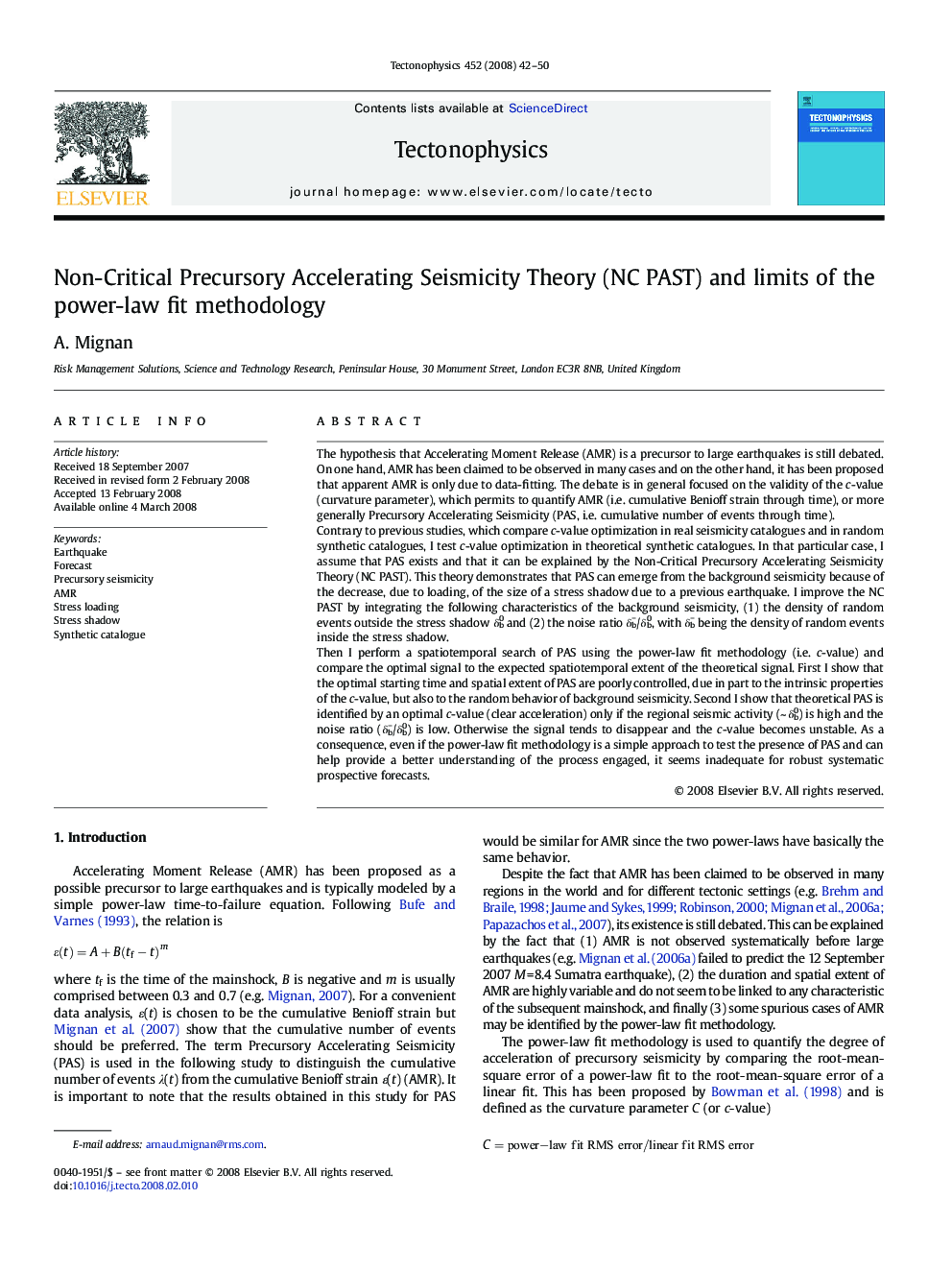| کد مقاله | کد نشریه | سال انتشار | مقاله انگلیسی | نسخه تمام متن |
|---|---|---|---|---|
| 4694553 | 1636915 | 2008 | 9 صفحه PDF | دانلود رایگان |

The hypothesis that Accelerating Moment Release (AMR) is a precursor to large earthquakes is still debated. On one hand, AMR has been claimed to be observed in many cases and on the other hand, it has been proposed that apparent AMR is only due to data-fitting. The debate is in general focused on the validity of the c-value (curvature parameter), which permits to quantify AMR (i.e. cumulative Benioff strain through time), or more generally Precursory Accelerating Seismicity (PAS, i.e. cumulative number of events through time).Contrary to previous studies, which compare c-value optimization in real seismicity catalogues and in random synthetic catalogues, I test c-value optimization in theoretical synthetic catalogues. In that particular case, I assume that PAS exists and that it can be explained by the Non-Critical Precursory Accelerating Seismicity Theory (NC PAST). This theory demonstrates that PAS can emerge from the background seismicity because of the decrease, due to loading, of the size of a stress shadow due to a previous earthquake. I improve the NC PAST by integrating the following characteristics of the background seismicity, (1) the density of random events outside the stress shadow δb0 and (2) the noise ratio δb−/δb0, with δb− being the density of random events inside the stress shadow.Then I perform a spatiotemporal search of PAS using the power-law fit methodology (i.e. c-value) and compare the optimal signal to the expected spatiotemporal extent of the theoretical signal. First I show that the optimal starting time and spatial extent of PAS are poorly controlled, due in part to the intrinsic properties of the c-value, but also to the random behavior of background seismicity. Second I show that theoretical PAS is identified by an optimal c-value (clear acceleration) only if the regional seismic activity (~ δb0) is high and the noise ratio (δb−/δb0) is low. Otherwise the signal tends to disappear and the c-value becomes unstable. As a consequence, even if the power-law fit methodology is a simple approach to test the presence of PAS and can help provide a better understanding of the process engaged, it seems inadequate for robust systematic prospective forecasts.
Journal: Tectonophysics - Volume 452, Issues 1–4, 2 June 2008, Pages 42–50